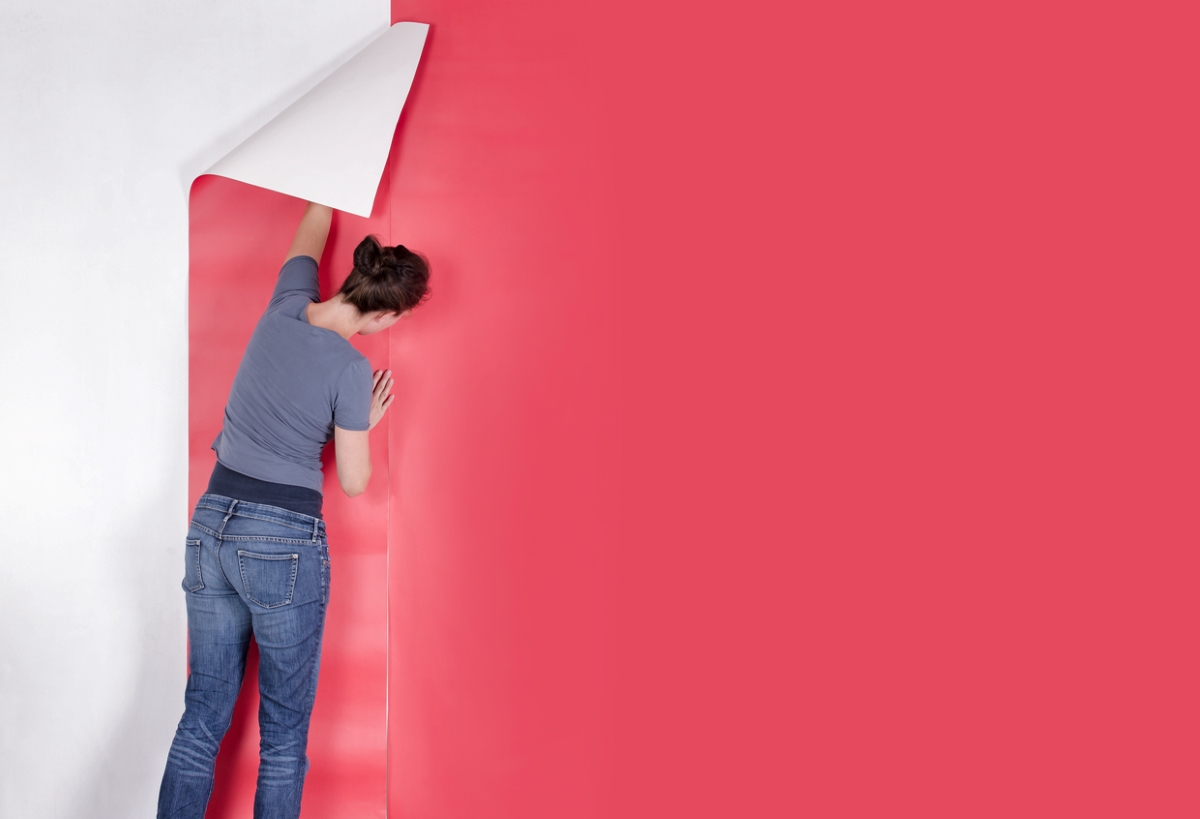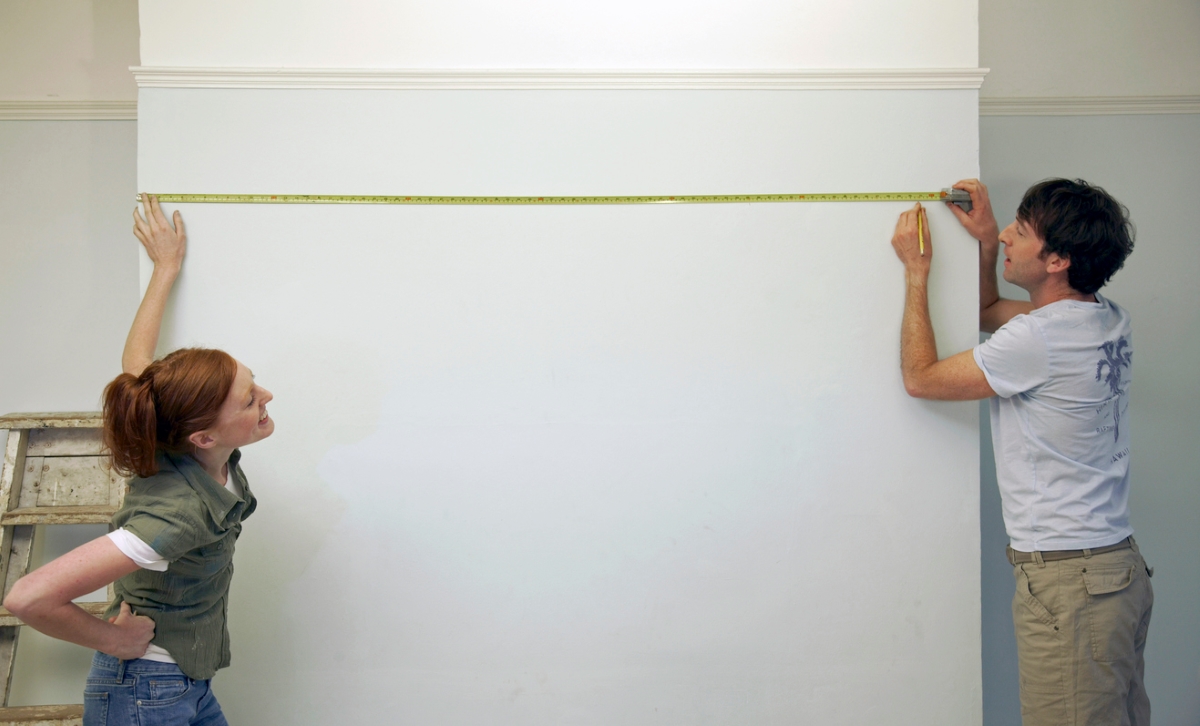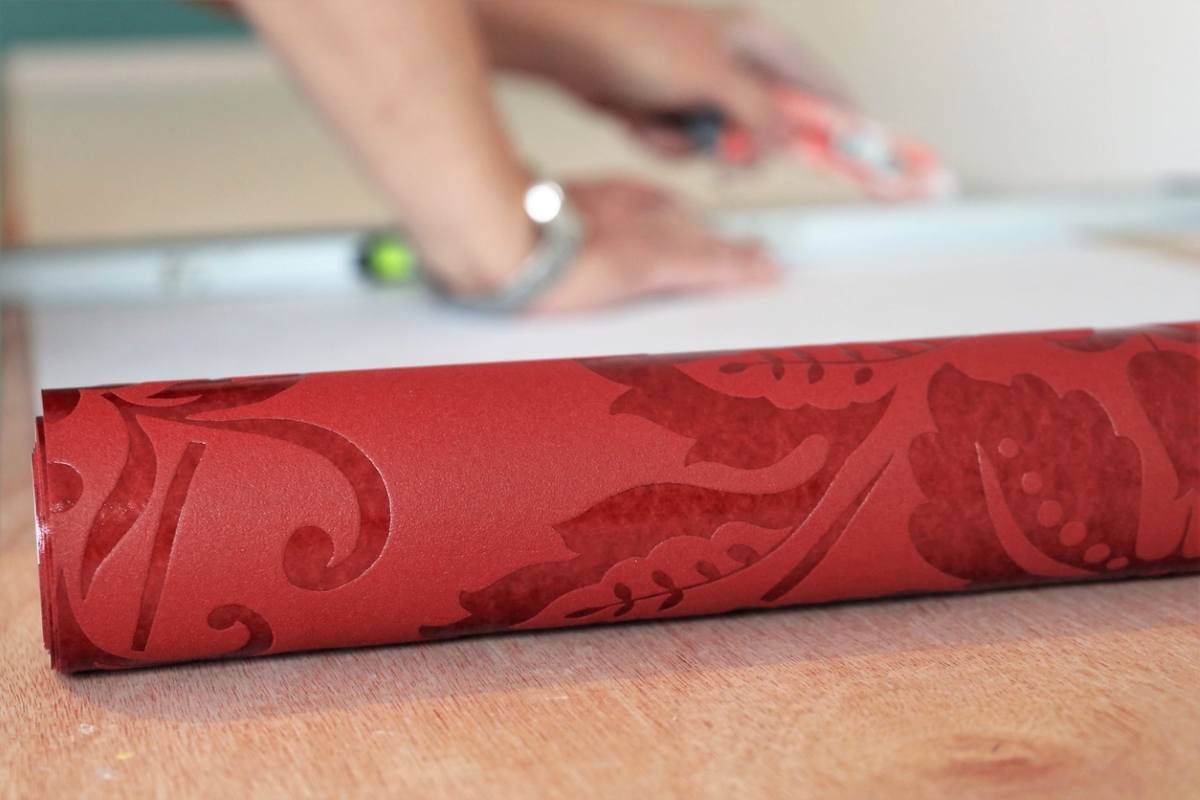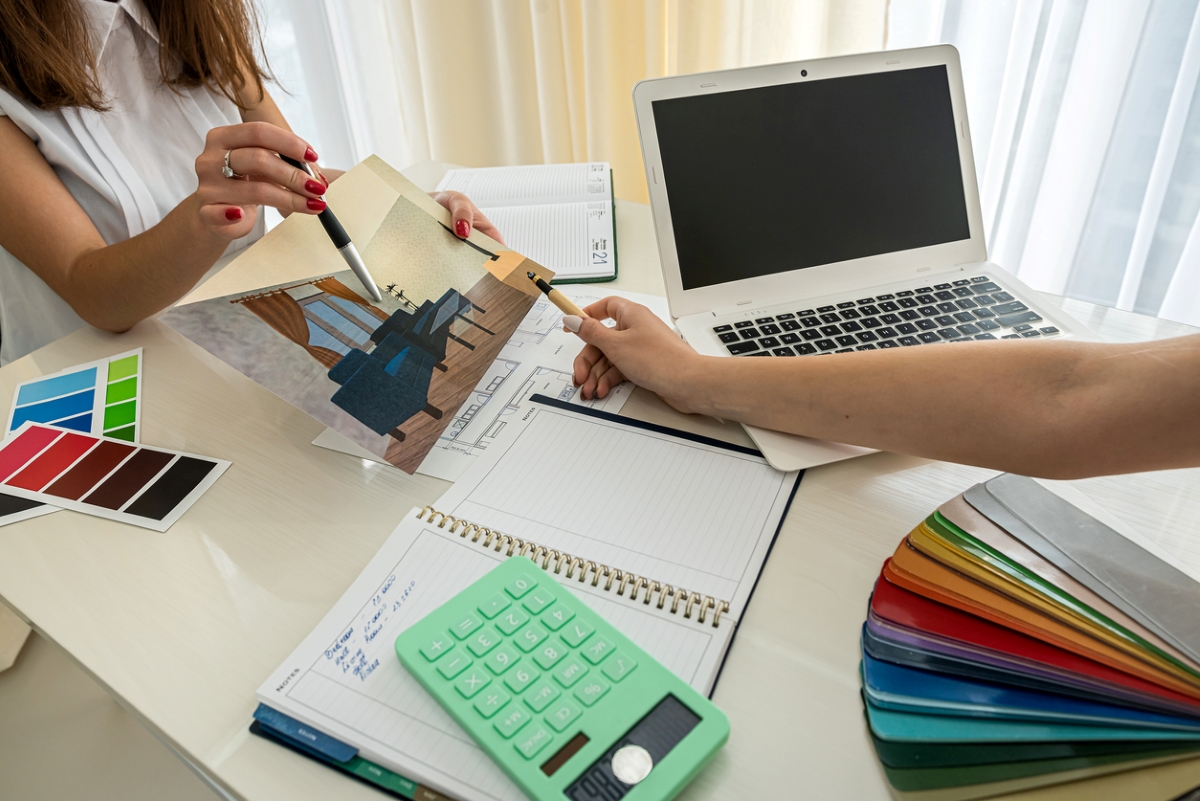

We may earn revenue from the products available on this page and participate in affiliate programs. Learn More ›
Wallpaper can add so much personality and texture to your space. However, wallpaper projects can seem intimidating for many homeowners, and it starts with the first question, “How much wallpaper do I need?”
There’s no need to stress as you undertake a wallpaper makeover. Let’s break down how to measure for wallpaper, which tools you’ll need, and other helpful tips as you decide how much material to purchase for your project.
Tools & Materials
Bobvila.com may earn a commission from purchases made through these links.
Project Overview
Working Time: 1-2 hours
Total Time: 1-2 hours
Skill Level: Beginner
Estimated Cost: $0-$15
Before You Begin
Before you start calculating wallpaper measurements, here are a couple of terms to know:
- Design/pattern repeat: The distance between each repeating pattern on the wallpaper product.
- Pattern match: The process of ensuring wallpaper patterns match at the seams and maintain a consistent pattern on your walls.
Rather than calculate the square footage of your walls, the best way to measure wallpaper is by determining how many strips you need to place on your walls and then calculating the number of floor-to-ceiling strips on each wallpaper roll. This prevents horizontal seams on the wall and is easier to install with simple, floor-to-ceiling strips to keep the pattern even and consistent.
You will need to have a wallpaper chosen before you can correctly measure since strip width and pattern repeat will vary by design, and that will determine the number of rolls needed.
RELATED: Solved! What Is the Best Way to Remove Wallpaper?
STEP 1: Measure the linear feet of your space.

The first step is to measure the linear feet of the space you plan to cover with your wallpaper.
- Measure the width of each wall you plan to wallpaper with a tape measure.
- Add the widths of each wall together for the total width. Write this number down.
- Measure the height of your walls. Use a ladder if needed. If your space has vaulted ceilings or another feature that leaves your walls with different heights, measure the highest point. Write this number down.
Pro tip: Don’t deduct for things like windows and doors in your measurements. You’ll cut them out of the wallpaper as you hang it.
STEP 2: Review wallpaper measurements.
Now it’s time to check the measurements of the wallpaper. According to Elizabeth Grace, interior designer and founder of Dream Homemaking, the most common wallpaper roll typically measures about 20.5 inches wide by 33 feet long, but homeowners should always double-check the exact measurements of their chosen wallpaper. The manufacturer or retailer should list the wallpaper dimensions on the roll’s label, including length, width, and design repeat.
Here are sample wallpaper measurements:
Width: 30 inches (2.5 feet)
Length: 33 feet
Design repeat: 36 inches (3 feet)
Remember ,you’ll need to line up each strip of wallpaper with the design of the previous strip to match the pattern.
STEP 3: Determine how many floor-to-ceiling strips you need.
It’s time to do some more math, but don’t fret. Make it easier on yourself by using the same unit of measurement for each number (e.g., 30 inches is 2.5 feet). Use your calculator to help you through these next steps.
Divide the total width of your walls by the wallpaper’s width. For example, 44 feet divided by 2.5 feet equals 17.6 feet. Then, round up to the nearest whole number (in this case, 18) to find the number of strips needed to cover your walls.
STEP 4: Account for pattern repeat to determine strip length.

You know how many strips you need, and now it’s time to see how long each strip needs to be to cover your wall from ceiling to floor.
“If using patterned wallpaper, account for pattern repeats,” Grace says. “Add extra wallpaper to allow for pattern matching and trimming, ensuring a seamless and aligned finish.”
To account for pattern repeat in your measurements, add the height of your walls to the pattern repeat number to determine the length of each wallpaper strip. For example, 8-foot ceilings plus a 3-foot pattern repeat equals 11 feet. This new length accounts for potential waste as you line up the pattern on the walls and trim off any excess paper.
RELATED: Solved! How Well Wallpaper Works in a Bathroom
STEP 5: Determine the number of strips per roll.
Divide the length of the wallpaper roll by the strip height from Step 4. Round down if you don’t have an even number. For example, 33 feet divided by 11 feet equals 3 floor-to-ceiling strips per wallpaper roll.
STEP 6: Calculate how many wallpaper rolls you need.

Divide the number of strips you need (Step 3) by the number of usable strips on each roll (Step 5). Round this number up to determine the number of rolls you need to buy. In this example, 18 divided by 3 equals 6, which means you would need to order six rolls for your project.
RELATED: How to Install Peel-and-Stick Wallpaper Like a Pro
Final Thoughts
While wallpaper sizing and measuring sounds simple, it can be a little trickier than expected for homeowners new to this project, especially if your home has unique features like vaulted ceilings and textured walls. When in doubt, Grace recommends enlisting the help of an interior designer or professional installer.
“Consulting with experienced wallpaper installers or interior designers can provide valuable guidance to accurately measure wallpaper, especially when dealing with intricate patterns or challenging wall layouts,” Grace says.
We recommend measuring your space’s linear feet and calculating the total needed strips, but many retailers or wallpaper manufacturers also offer an online tool that calculates the square footage of a room that can help you check your own math and estimated number of wallpaper rolls.
Another helpful tip is to always buy one or two more rolls than you think you’ll need to account for any mistakes in your measurements or during installation. Don’t let the wallpaper cost hold you back. Most retailers will accept returns of unused rolls still in the packaging.
